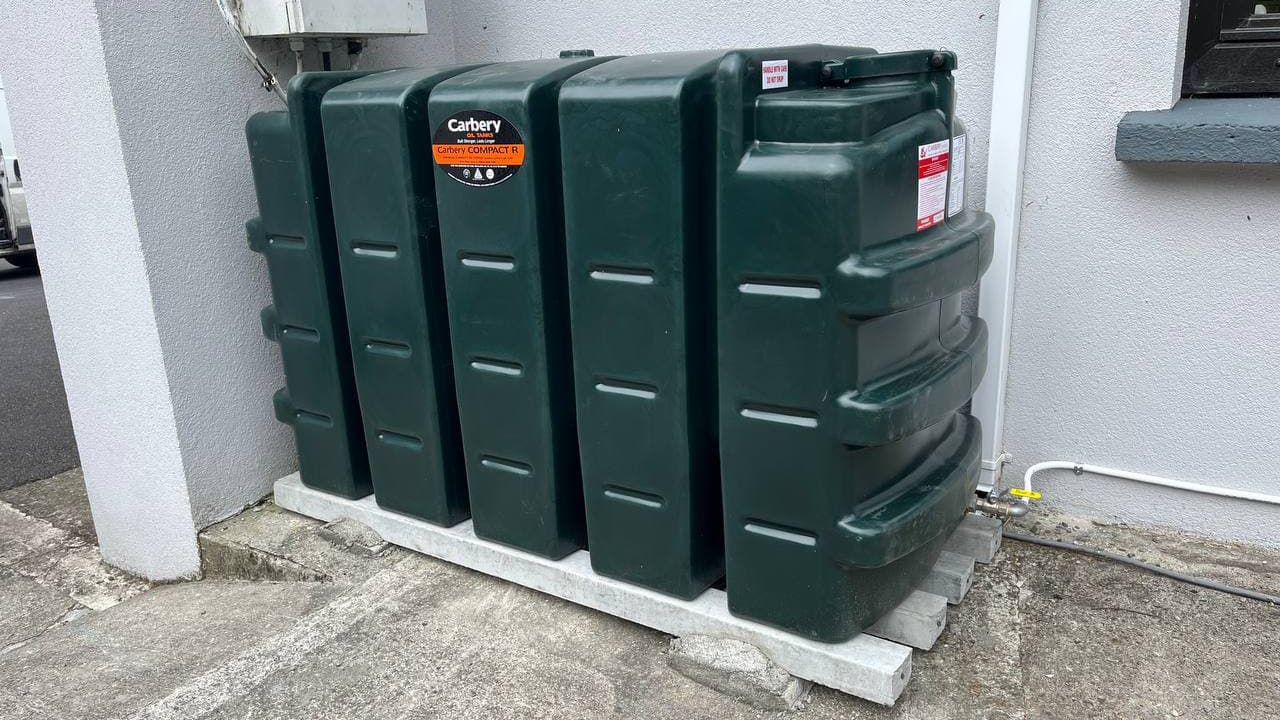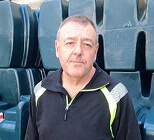Choosing a new oil tank isn’t just about picking the biggest one that fits. The right capacity and material can make all the difference in safety, efficiency, and long-term reliability. Whether you’re replacing an old tank or installing one for a new build, here’s what you need to know to make a smart decision.
1. Choosing the Right Tank Capacity
Your oil tank’s capacity should suit your household’s heating needs without being excessive. Most domestic tanks in Ireland range between 900 to 1,500 litres, but the right size for your home depends on:
➡ Small homes or holiday properties often go for 900–1,000L tanks.
➡ Medium-sized family homes typically choose 1,200–1,400L.
➡ Larger homes or rural households may need 1,500L+ to reduce refill frequency.
⚠️ Tip: Over-sizing your tank can lead to longer storage times and fuel degradation. Undersizing means more frequent (and possibly more expensive) top-ups.
- Property size and insulation
- Number of people in the house
- How often you want to refill
- Space available for installation
➡ Small homes or holiday properties often go for 900–1,000L tanks.
➡ Medium-sized family homes typically choose 1,200–1,400L.
➡ Larger homes or rural households may need 1,500L+ to reduce refill frequency.
⚠️ Tip: Over-sizing your tank can lead to longer storage times and fuel degradation. Undersizing means more frequent (and possibly more expensive) top-ups.
2. Choosing Between Plastic and Steel Tanks
There are two main types of tank materials: plastic (polyethylene) and steel. Each has its pros and cons, depending on your location and setup.
🔹 Plastic Oil Tanks
➡ Most homeowners in Ireland choose bunded plastic tanks for safety and compliance. These include a second containment layer to prevent spills if the inner tank fails.
🔸 Steel Oil Tanks
➡ Steel tanks are less common for homes but may be suitable for specific situations, especially where fire protection or high-volume storage is required.
🔹 Plastic Oil Tanks
- Lightweight and rust-free
- Easier to move and install
- Resistant to UV and most weather
- Available in single-skin or bunded versions
- Ideal for domestic use and general Irish conditions
➡ Most homeowners in Ireland choose bunded plastic tanks for safety and compliance. These include a second containment layer to prevent spills if the inner tank fails.
🔸 Steel Oil Tanks
- Strong and durable, especially in harsh environments
- Suitable for commercial or industrial use
- Heavier and require a solid base
- Can rust over time if not properly maintained
➡ Steel tanks are less common for homes but may be suitable for specific situations, especially where fire protection or high-volume storage is required.
3. What Is a Bunded Tank — and Do You Need One?
A bunded oil tank has two layers: an inner tank that holds the fuel and an outer “bund” to catch leaks. They are now required in many parts of Ireland, especially when:
✅ Bunded tanks are safer and help prevent environmental damage. They’re often worth the extra cost for peace of mind.
- The tank is near a drain, water source or hard surface
- It's over 2,500L in capacity
- It’s within 10 metres of water or a building
✅ Bunded tanks are safer and help prevent environmental damage. They’re often worth the extra cost for peace of mind.
4. Consider Tank Shape and Space Available
Oil tanks come in horizontal, vertical and slimline models. If you’re tight on space (e.g. beside a shed or wall), a slimline plastic bunded tank can fit where standard tanks won’t.
Professional installers will assess your location and suggest the most practical model.
Professional installers will assess your location and suggest the most practical model.
5. Don't Forget the Base
Whichever tank you choose, it needs to sit on a level, fire-resistant base — such as concrete or proper paving slabs. A poor base can cause the tank to tilt or crack, leading to leaks or even tank failure.
If you’re replacing an old tank, the base may need to be rebuilt or extended. This is where professional installation makes a huge difference.
If you’re replacing an old tank, the base may need to be rebuilt or extended. This is where professional installation makes a huge difference.
Conclusion: Let the Experts Help You Choose
Choosing the right oil tank isn’t something to guess. Between regulations, base requirements, and matching your heating needs — a quick call can save you a lot of hassle down the line.
📍 Serving all of Leinster, we’ll help you find the perfect tank, install it safely, and take away your old one.
📞 Call Brian on 086 806 8776
🌐 Learn more at oiltankreplacement.ie
📍 Serving all of Leinster, we’ll help you find the perfect tank, install it safely, and take away your old one.
📞 Call Brian on 086 806 8776
🌐 Learn more at oiltankreplacement.ie








